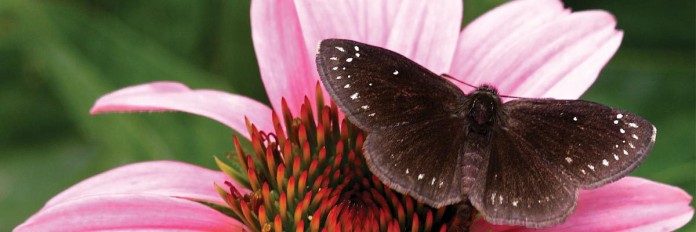In 2011, I recommended a nonfiction book entitled “Winged Obsession: the Pursuit of the World’s Most Notorious Butterfly Smuggler” by Jessica Speart. It’s a riveting nonfiction account of how a U.S. Fish and Wildlife Service agent goes undercover to catch the world’s most infamous butterfly smuggler.
Bug fair
A key character in the story was the Los Angeles County Museum of Natural History’s annual Bug Fair. Ever since, I’ve dreamed of attending the Bug Fair. My younger daughter, Emma, now lives in L.A., so I combined business with pleasure and visited her for the 30th Annual Bug Fair in late May.
We arrived around noon, May 22, and it was difficult to find a parking space. When we got through the Museum doors, a mob scene greeted us.
I couldn’t believe my eyes. I expected hundreds of people, but there were thousands — of all ages, all races and all ethnic backgrounds.
Later I learned that 8,700 people had come to the Bug Fair the previous day, and on Sunday, Emma and I were among more than 9,000 visitors.
Insect popularity
When did insects become so popular? I consider it great news that people are interested in the most abundant organisms on earth.
The Museum’s three main halls were lined with vendor tables, and people were stacked three and four deep to see the displays. Most popular were the venders selling pinned insect specimens. Prices ranged from just a few dollars to one butterfly I saw priced at $1,500.
I didn’t spend a dime, but I was especially tempted by the larger species. There was an 8-inch stick insect with a body as thick as my index finger, a 4-inch long rhinoceros beetle adorned with huge horns, iridescently colored beetles of all sizes and beautiful tropical butterflies sporting rainbows of color.
Insect farms
Though greedy, irresponsible collectors once decimated populations of exotic insects. Today most come from insect farms in Latin America and southeast Asia.
Local collectors, who once were “bad guys” in the insect collecting world, now make a respectable living raising insects they can sell for hundreds and even thousands of dollars. These insect farms are so popular they are often on the itinerary of eco-tours.
Farming insects sure beats slash-and-burn agriculture that destroys rain forests around the world. And I’m sure insect farmers are amazed that they can make a decent living by using the natural landscape rather than destroying it.
Backyard update
On May 18, I recorded a new species for my property. I stepped onto the deck outside my office above the garage, and I saw a black burly animal run by the garage and veer off into the woods.
At first I thought “dog,” but it was too big and it ran with a loping gait. Then I realized it was a bear. It weighed 120-130 pounds, so it was a yearling born in January 2015.
This did not come as a complete surprise because neighbors have been telling me for several years they had seen a bear cross the road near my house. A few days later my wife found a pile of bear poop 12 feet from the garage to confirm the presence of our new visitor.
Cicada update
I live in the midst of the Brood V outbreak of 17-year periodical cicadas.
I had seen just a few before I left for California May 21, but when I returned on the 26, many were visible on the porches. The drone, however was just beginning.
The sound drifted up from the valley below the house. By Memorial Day the sound was near deafening. It will only get worse as cicadas keep emerging for the next several weeks. The daily concert should close by early July.
Interestingly, since I returned from California, I have not seen a single bird, other than seed-eating finches, on my feeders. Due to all the scattered wings I’ve been finding on the ground, I suspect the birds are taking advantage of the virtually unlimited supply of tasty, nutritious cicadas.













